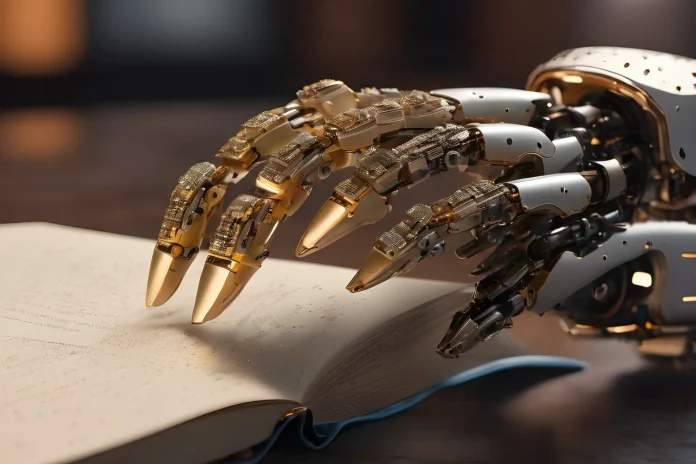Imagine a robot reads braille text at speeds double that of a human reader. This futuristic scenario is coming to life thanks to researchers at the University of Cambridge. They’ve developed a robotic sensor that uses artificial intelligence to decode braille remarkably, offering exciting possibilities for assistive technology and robotics advancements.
Unlocking the Secrets of Braille at High Speed
The research team, led by Professor Fumiya Iida, controlled learning algorithms to train a robotic sensor swiftly to glide over braille lines. This innovative sensor achieved an impressive reading speed of 315 words per minute, maintaining an accuracy level of nearly 90%. While the primary goal wasn’t to create an assistive device, the technology’s core lies in its ability to mimic human touch sensitivity – an essential element for developing robots with skilful and adaptable hands.
The Challenge of Replicating Human Fingertip Sensitivity
Human fingertips have a remarkable sensitivity, allowing us to perceive the world with delicate detail. From sharp texture variations to measuring the appropriate force for grasping objects, our fingertips efficiently perform intricate tasks. Replicating this level of sensitivity in robots while maintaining energy efficiency has long been a formidable engineering challenge. Professor Iida’s lab at Cambridge is actively handling this challenge, exploring solutions that enable robots to master skills that come naturally to humans.
The Ideal Testing Ground for Robotic ‘Fingertips’
With its minuscule raised dots representing letters, Braille presents an ideal proving ground for a robotic ‘fingertip’ due to its demanding sensitivity requirements. The researchers employed a readily available sensor to craft a robotic braille reader that mirrors human reading behavior more closely than existing static models.
What is the Approach to Braille Deciphering?
“Current robotic braille readers operate statically, deciphering one letter at a time,” explains co-author David Hardman. “This method differs significantly from how humans read. We aimed to develop a more dynamic and efficient approach.”
Their solution involved equipping the robotic sensor with a camera in its ‘fingertip’. This camera captures images as the sensor glides over braille text, and the information is processed with sensor data to decipher the letters. However, image processing shows a significant difficulty, as the sensor’s movement creates motion blur, which requires time and energy to correct.
A Clearer Vision for the Robotic Reader
To overcome this issue, the team developed machine learning algorithms that empower the robotic reader to ‘deblur’ the captured images before attempting letter recognition. The algorithm was trained on a dataset of sharp braille images with simulated blur, enabling it to remove distortions and enhance clarity effectively.
Speed and Accuracy of Robot Reads Braille
After incorporating the algorithms, the researchers tested their readers, achieving a remarkable reading speed of 315 words per minute with an accuracy of 87%. This performance surpasses the speed and accuracy of human braille readers, demonstrating the technology’s potential.
“The accuracy achieved with simulated blur training was truly surprising,” comments Hardman. “We discovered an optimal balance between speed and accuracy, mirroring how humans read.” The researchers envision broader applications for this technology that go beyond braille reading. “Braille reading speed serves as an excellent gauge for the dynamic performance of tactile sensing systems,” explains Potdar. “Our findings could be applied to various domains, from detecting surface textures to preventing slippage in robotic manipulation.”
Read more: “Samsung launches special screens for visually impaired.”
Shaping the Future of Robotics
The team is currently working on reducing the technology to the size of a human hand or even skin, making way for integration into humanoid robots like Optimus. With continued development, this innovative sensor that helps robot reads braille could revolutionize the field of robotics, enabling robots to interact with the world more subtly and sensitively, potentially leading to advancements in various fields, from assistive technology to industrial automation.
This research, where a robot reads braille, was supported by the Samsung Global Research Outreach Program, highlighting the collaborative efforts driving advancements in robotics and artificial intelligence. This breakthrough marks a significant step towards replicating human-like touch in robots, opening exciting possibilities for the future.



